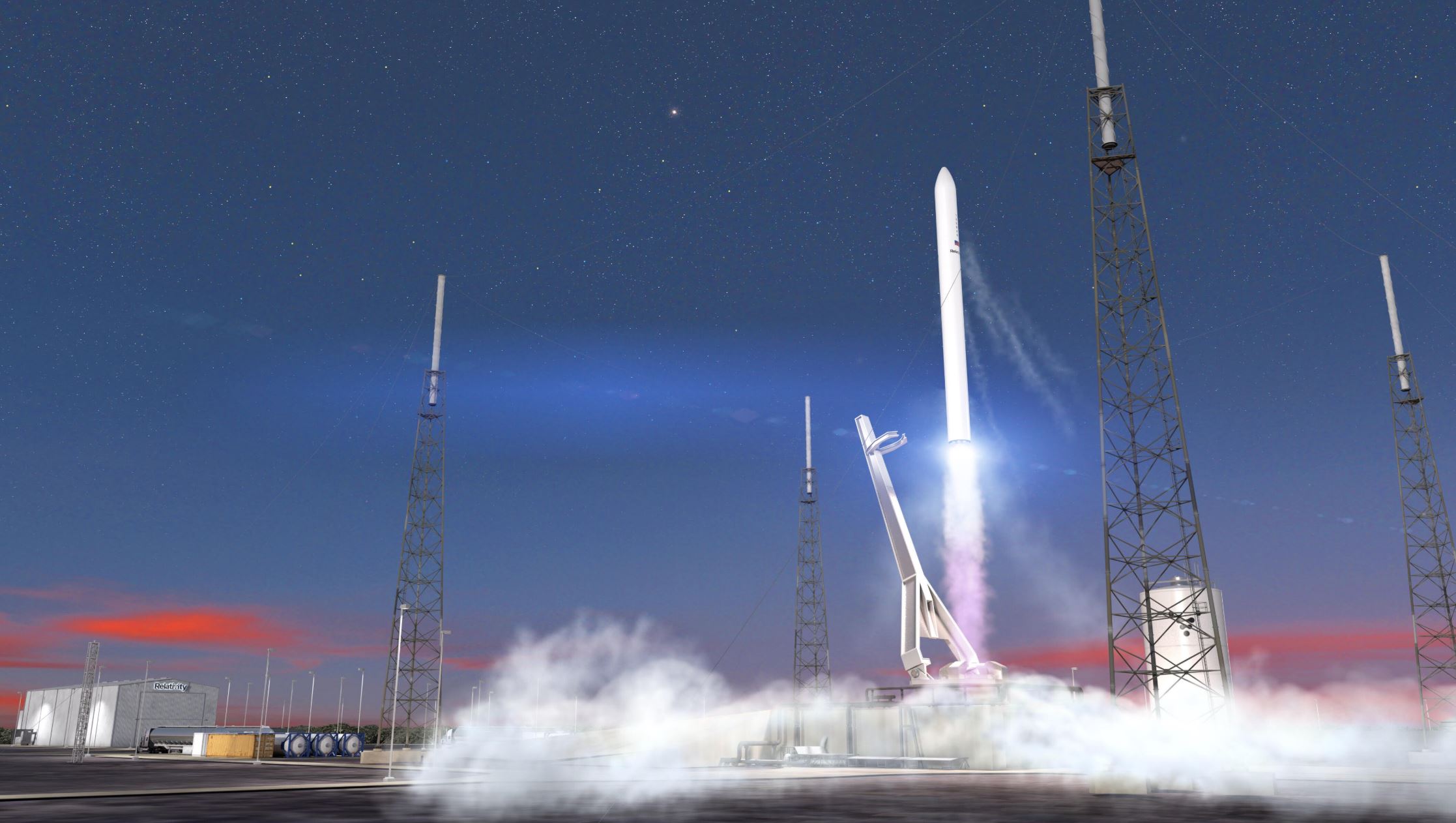Relativity Space sets launch of world's 1st 3D-printed rocket for March 8
The 3D-printed Terran 1 rocket from Relativity Space will fly from Florida's space coast, and will also mark the first natural liquid natural gas booster in space if all goes to plan.

The world's first 3D-printed rocket may soar to space as soon as March.
Relativity Space says it has launch licenses ready for its expendable, 3D-printed Terran 1 rocket to attempt its orbital debut on March 8, no earlier than 1 p.m. EST (1800 GMT).
Company officials confirmed on Twitter Wednesday (Feb. 22) that the launch will proceed from Cape Canaveral Space Force Station on Florida's space coast. The mission is called GLHF (Good Luck, Have Fun) and will assure the readiness of the 110-foot (33-meter) Terran 1 before it flies customer payloads.
Related: Relativity Space to launch satellite 'tugs' on 3D-printed rocket
You’ve asked, “Wen Launch?” and to that, we say...👇 Catch us live at Launch Complex 16 in Cape Canaveral, FL on March 8, 2023 to watch the world’s first 3D printed rocket fly. 🚀 #GLHFhttps://t.co/NEhQlvB4Dj pic.twitter.com/4ju05i2FhgFebruary 22, 2023
The company's rocket, about 85% 3D-printed by mass, has been called "the largest 3D printed object to exist and to attempt orbital flight" by the company. Relativity Space plans to boost 3D-printing on Terran 1 rockets to 95% of its mass.
Additive manufacturing is also used for the nine Aeon engines on the first stage of the rocket, and the Aeon Vac engine on the second. In a nod to environmental sustainability, Relativity Space also will use liquid oxygen as well as liquid natural gas for Terran 1. If the rocket makes it to space, it will be the first to do so with natural gas fuel and will form a keystone of Relativity's eventual plan to use methane on Mars for its planned Red Planet missions.
Relativity was co-founded by Tim Ellis and Jordan Noone in 2015 following work at Blue Origin and SpaceX, respectively. The small-lift rocket can send up to 2,756 pounds (1,250 kilograms) to low-Earth orbit, according to Relativity, and a bigger booster is in production.
Breaking space news, the latest updates on rocket launches, skywatching events and more!
Relativity unveiled Terran R in 2021, a much larger booster of 216 feet (66 m) tall by 16 feet (4.9 m) wide that can send nearly 25 times the payload mass of Terran 1 into space. The fully reusable rocket, launching as soon as 2024, can send as much as 44,100 lbs. (20,000 kg) to low Earth orbit.
Terran R's capacity is approaching that of SpaceX's Falcon 9, a competitor that regularly sends large payloads for NASA, the security industry and its own satellite constellation (Starlink) to space for almost 10 years. Falcon 9 is also partially reusable as the first stage can be returned on land or to a drone ship.
Elizabeth Howell is the co-author of "Why Am I Taller?" (ECW Press, 2022; with Canadian astronaut Dave Williams), a book about space medicine. Follow her on Twitter @howellspace. Follow us on Twitter @Spacedotcom or Facebook.

Elizabeth Howell (she/her), Ph.D., was a staff writer in the spaceflight channel between 2022 and 2024 specializing in Canadian space news. She was contributing writer for Space.com for 10 years from 2012 to 2024. Elizabeth's reporting includes multiple exclusives with the White House, leading world coverage about a lost-and-found space tomato on the International Space Station, witnessing five human spaceflight launches on two continents, flying parabolic, working inside a spacesuit, and participating in a simulated Mars mission. Her latest book, "Why Am I Taller?" (ECW Press, 2022) is co-written with astronaut Dave Williams.
